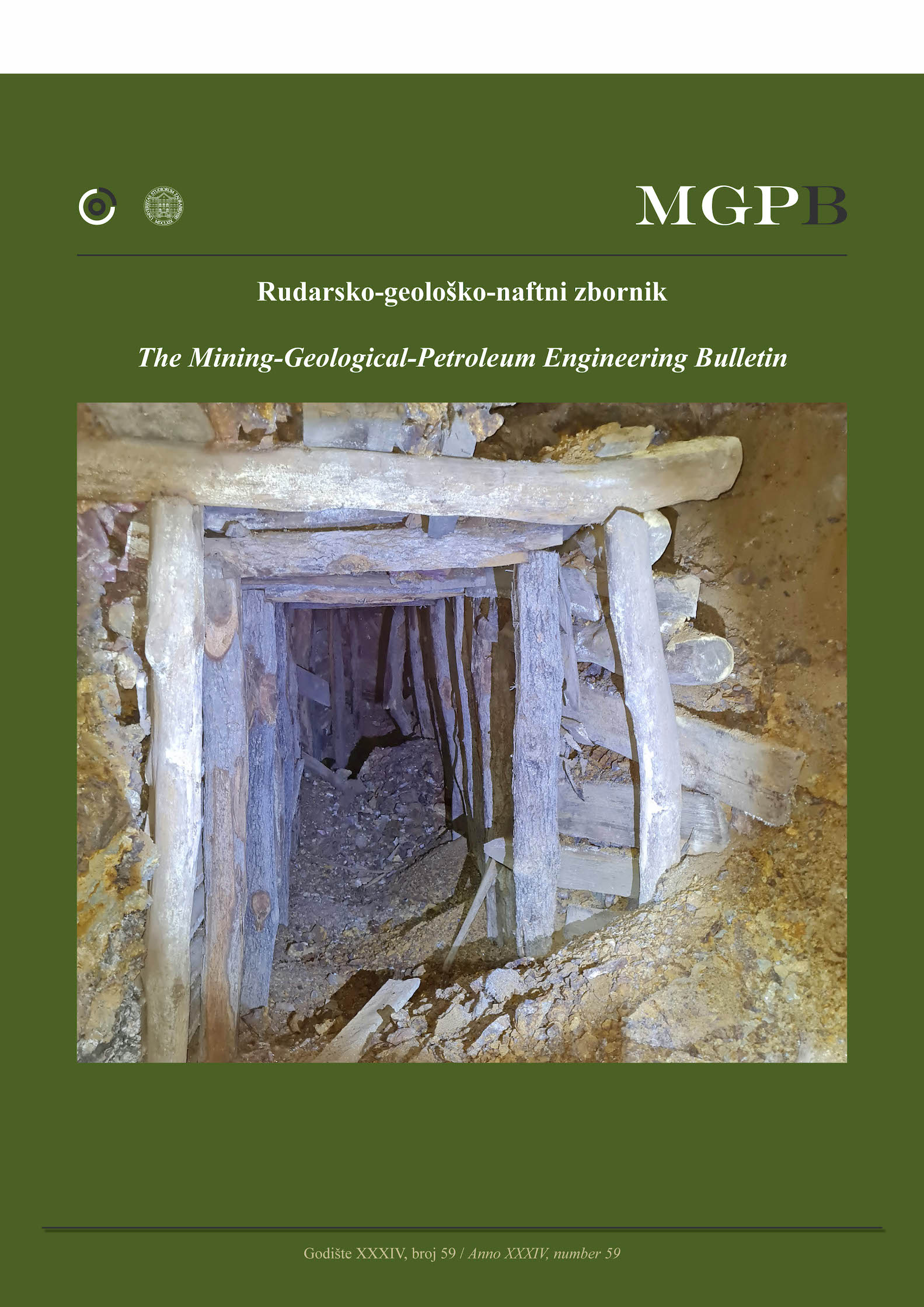Utilizing stable water isotopes (δ2H and δ18O) to study soil-water origin in sloped vineyard: first results
DOI:
https://doi.org/10.17794/rgn.2022.3.1Keywords:
soil-water behavior, precipitation infiltration, stable isotopes of water, hillslope vineyard, vadose zoneAbstract
The diversity of processes taking place in hillslope agro-ecosystems makes the estimation of vadose zone dynamics rather challenging. This paper presents the first insight into the research of volumetric water content, granulometric composition, meteorological data, precipitation and soil-water isotopic composition conducted within the SUPREHILL project at its vadose zone observatory. The main goals of this research are related to the evaluation of soil-water origin at the hillslope vineyard, but also to the estimation of depths until which precipitation infiltrates and where the occurrence of preferential flow is possible. For that purpose, hydrometeorological data, granulometric composition and stable isotopesof hydrogen (δ2H) and oxygen (δ18O) from precipitation and sampled soil water have been used. The results indicate the existence of a different isotopic signature in soil water, which suggests different infiltration patterns in the investigated area. Also, the results point out that surface runoff, subsurface runoff, and most of the passive wick lysimeters respond to precipitation, while the response of suction probes located at deeper depth is not that evident. This corresponds to the results related to the variation of water content at different depths. All the results indicate the possible existence of a low permeable layer at an approximate depth of 60 cm. Furthermore, preferential flow, if it exists, can be expected from the shallowest depths of the vineyard to a maximum depth of 80 cm. It is expected that an established long-term monitoring network at the SUPREHILL Observatory will give a more precise definition of soil-water behaviour and the existence of preferential flow.
Downloads
Published
How to Cite
Issue
Section
License
Copyright (c) 2022 authors and journal

This work is licensed under a Creative Commons Attribution 4.0 International License.
Creative Commons-BY
Authors who publish with this journal agree to the following terms:
In agreeing this form, you certify that:
- You read the ethical codex of the RGN zbornik available at journal web.
- You submitted work is your original work, and has not previously been published and does not include any form of plagiarism.
- You own copyright in the submitted work, and are therefore permitted to assign the licence to publish to RGN zbornik.
- Your submitted work contains no violation of any existing copyright or other third party right or any material of an obscene, libellous or otherwise unlawful nature.
- You have obtained permission for and acknowledged the source of any illustrations, diagrams or other material included in the work of which you are not the copyright owner.
- You have taken due care to ensure the accuracy of the work, and that, to the best of your knowledge, there are no false statements made within it.
- All co-authors of this submitted work are aware of, and in agreement with, the terms of this licence and that the submitted manuscript has been approved by these authors.
Publication licence
You retain copyright in your submitted work, according to journal license policy (CC-BY). By signing this form you agree that RGN zbornik may publish it under the publication licence. In summary the licence allows the following:
Anyone is free:
- To copy, distribute, display, and perform the work.
- To make derivative works.
Under the following conditions:
- The original author must always be given credit.
- The work may not be used for commercial purposes.
- If the work is altered, transformed, or built upon, the resulting work may only be distributed under a licence identical to this one.
Exceptions to the licence
In addition to publishing the work printed under the above licence, RGN zbornik will also enable the work to be visible online.
The journal editorial can change the licence rules anytime but it cannot retroactively restrict author(s) rights.


